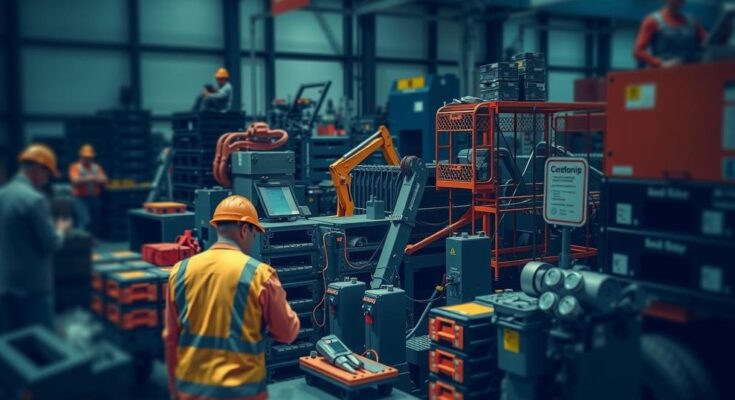The U.S. is experiencing a persistent labor shortage exacerbated by demographics and potential restrictive immigration policies. With forecasts showing limited growth in the workforce and increasing demand in key sectors, experts warn of an impending crisis. Historical trends reveal that immigration play a crucial role in supporting economic stability and workforce needs moving forward.
The U.S. is grappling with a persistent labor shortage, a challenge highlighted by various sectors such as trucking and healthcare even before the pandemic. As COVID-19 reshaped work patterns, the problem was somewhat overshadowed. Recently, the job demand has softened, pushing unemployment rates slightly up, yet immigration has provided some relief. However, with political figures like Trump promising strict immigration measures, this issue is poised to worsen. The reasons behind this labor shortage are multifaceted, largely stemming from America’s changing demographics. The Bureau of Labor Statistics projects only 6.4 million new workers by 2032, a stark contrast to the 25 million during the baby-boomer influx in the ’70s which kept wages suppressed. Lightcast, an analytics firm, refers to this crisis as “The Demographic Drought,” comparing it to an impending hurricane threatening to disrupt essential sectors such as healthcare and construction. The urgency of these shortages is crucial: significant gaps in the workforce, particularly in vital industries, are expected within the next five years. As Ron Hetrick from Lightcast cautions, a severe storm is on the horizon for these sectors. Furthermore, the potential outcomes of strict immigration policies could exacerbate this labor crisis even further, as highlighted by Federal Reserve Chairman Jerome Powell. Brookings Institution examined the economic fallout from immigration policy changes, noting that a sharp decline in immigration would severely hinder GDP growth. A drastic reduction in immigration within a year may lead to notable job losses, impacting average employment numbers significantly. When net migration shifts from positive to negative, the potential economic impact is substantial. Despite political rhetoric suggesting otherwise, economists assert immigration generally benefits the U.S. economy. Tarek Hassan from Boston University emphasizes how increased immigration fosters economic growth and raises wages. The demand for workers will mostly arise in fields where immigrants are predominantly employed, such as construction and healthcare, where a significant portion of the workforce is foreign-born. The pandemic has also seen an increase in labor force participation among women with young children, aided by adaptable work policies. Yet, these women often lack qualifications for high-demand trades like truck driving and plumbing, despite surpassing men in educational attainment. Their degrees lead to fields that might not be experiencing high demand at the moment. As the population ages, the workforce faces additional strain. The demographic shift shows that vital services provided by older workers are less likely to be automated. With millions in essential roles nearing retirement, the outlook on filling these positions remains bleak, particularly in industries experiencing high vacancy rates. Lightcast’s findings underscore the importance of immigration in countering labor force shrinkage due to declining fertility and an aging population. Their analysis indicates immigration will become increasingly vital to sustaining workforce growth. Without a strategic approach to immigration, the labor shortage could grow into a full-blown crisis for the economy.
The article examines the ongoing labor shortage in the U.S. and the factors contributing to it, particularly in light of changing political dynamics around immigration. It highlights historical trends in the workforce, demographic challenges, and the potential economic consequences if current immigration policies remain in place. Additionally, it addresses the importance of immigrant labor in key industries and the long-term implications for economic growth as the U.S. population ages.
In conclusion, the U.S. labor shortage, a complex issue fueled by demographic shifts and political decisions on immigration, poses a daunting challenge ahead. The country faces critical workforce gaps particularly in essential sectors. If strict immigration measures are implemented, the repercussions could become dire, impacting GDP growth and job availability. A balanced approach is essential to ensure the economic vitality of the nation.
Original Source: www.usnews.com



